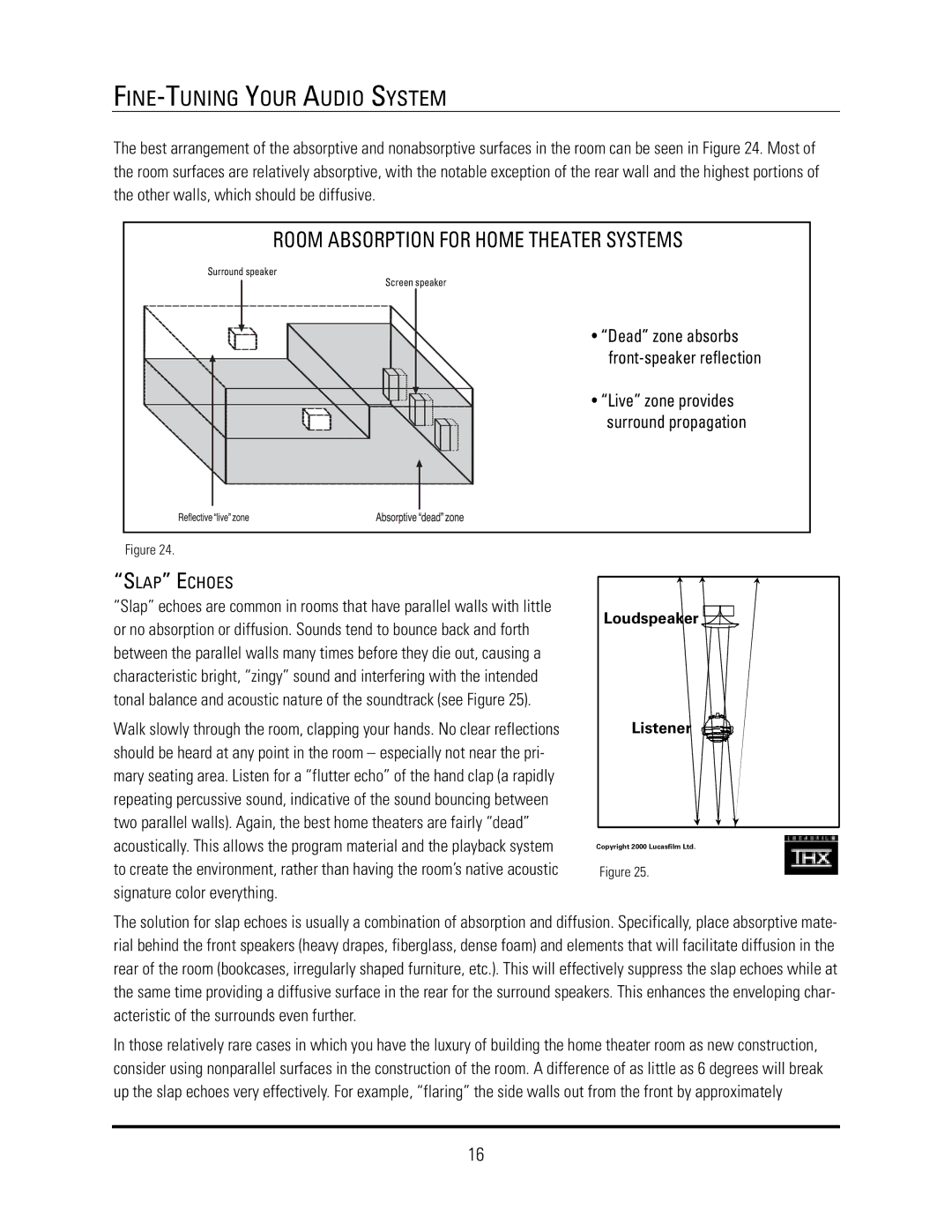
FINE-TUNING YOUR AUDIO SYSTEM
The best arrangement of the absorptive and nonabsorptive surfaces in the room can be seen in Figure 24. Most of the room surfaces are relatively absorptive, with the notable exception of the rear wall and the highest portions of the other walls, which should be diffusive.
ROOM ABSORPTION FOR HOME THEATER SYSTEMS
Surround speaker
Screen speaker
• “Dead” zone absorbs
• “Live” zone provides surround propagation
Figure 24.
“SLAP” ECHOES
“Slap” echoes are common in rooms that have parallel walls with little or no absorption or diffusion. Sounds tend to bounce back and forth between the parallel walls many times before they die out, causing a characteristic bright, “zingy” sound and interfering with the intended tonal balance and acoustic nature of the soundtrack (see Figure 25).
Walk slowly through the room, clapping your hands. No clear reflections should be heard at any point in the room – especially not near the pri- mary seating area. Listen for a “flutter echo” of the hand clap (a rapidly repeating percussive sound, indicative of the sound bouncing between two parallel walls). Again, the best home theaters are fairly “dead” acoustically. This allows the program material and the playback system to create the environment, rather than having the room’s native acoustic signature color everything.
Loudspeaker 
Listener
Copyright 2000 Lucasfilm Ltd.
Figure 25.
The solution for slap echoes is usually a combination of absorption and diffusion. Specifically, place absorptive mate- rial behind the front speakers (heavy drapes, fiberglass, dense foam) and elements that will facilitate diffusion in the rear of the room (bookcases, irregularly shaped furniture, etc.). This will effectively suppress the slap echoes while at the same time providing a diffusive surface in the rear for the surround speakers. This enhances the enveloping char- acteristic of the surrounds even further.
In those relatively rare cases in which you have the luxury of building the home theater room as new construction, consider using nonparallel surfaces in the construction of the room. A difference of as little as 6 degrees will break up the slap echoes very effectively. For example, “flaring” the side walls out from the front by approximately
16
